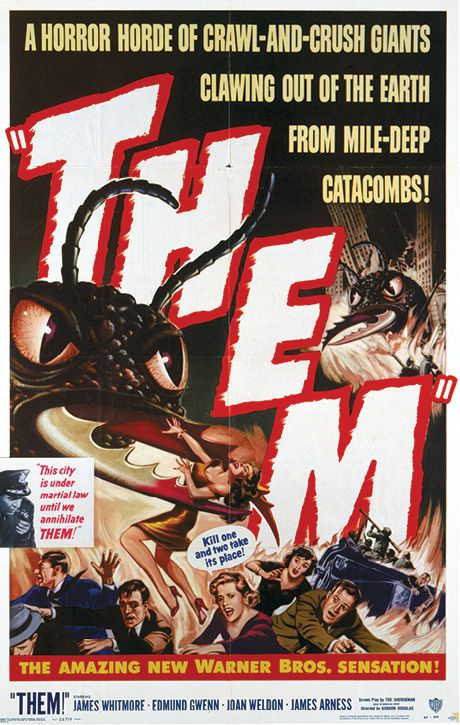
“Has this ever happened to you? While you are enjoying a relaxing picnic in the New Mexican desert, your lunch is overrun by ants—not ordinary ants, but 12-foot-tall behemoths, dripping saliva from their jaws and chittering wildly. You pull your Browning automatic rifle out from underneath the picnic blanket and empty an entire magazine into the nearest ant, but it doesn’t even flinch. Instead, it crushes you between its pincers. Then the ants eat all of your potato salad.”
Thus begins one of the posts in Vanderbilt Professor Robert Scherrer’s new blog, Cosmic Yarns, which explores the intersection between science and science fiction. Scherrer approaches the blog with an unusual perspective: He not only chairs the Department of Physics and Astronomy at Vanderbilt but is himself a published science fiction author. As such, he understands that while writers often include the newest scientific discoveries and technological innovations in their stories, they also sometimes make things up to move the plot along. So who better than a practicing physicist to help readers tell one from the other?
“Does the world really need another physics blog?” he writes in his introductory post. “Probably not. Or at least not from me. I want to try something a bit different here. I work as a cosmologist, mainly in the areas of dark matter and dark energy. But I also write science fiction sporadically, and I have always been intrigued by the interplay between science and science fiction—that’s what I want to explore in this blog.”
Since launching the blog in April, Scherrer has covered a range of topics, from faster-than-light warp drives and wormholes to the Matrix-like possibility that we might be living inside a computer simulation. And yes, he even has offered his opinion on the viability of monster ants.
In his post titled “You Need Not Fear the Giant Ants,” Scherrer uses the premise of the 1954 cult film Them!, in which atomic-bomb tests cause mutant ants to grow to an enormous size, to explore the idea of the “square-cube law.” The law states that as something grows larger, its volume and weight will increase by the cube of its length. Its surface area, however, will increase only by the square of its length.
“Why does this matter?” writes Scherrer. “Because most of the requirements of the animal, such as food and oxygen, are proportional to the volume of the animal, while many of the things that enable it to survive depend on its surface area. So in most cases, being smaller makes life easier, and large animals are constantly striving to avoid the bottleneck of having too small a surface area for their volume.”
Scherrer goes on to explain that the square-cube law is the reason why ants can get by with spindly legs while elephants require legs the size of tree trunks. In short, the heavier an animal is, the larger its legs—or more precisely, the cross-sectional area of its legs—must be.
“Giant ants not only would collapse under their own weight, but would suffocate from lack of oxygen.”
The square-cube law also explains why ants can survive breathing through spiracles, or tiny air holes, whereas humans must rely on more complex lungs, which have roughly the surface area of a tennis court when unfolded. All that surface area is needed to absorb a sufficient amount of oxygen, and the same is true for digestive tracts and nutrients.
So taking that information into consideration, could there be such a thing as a giant ant? The answer is a resounding no.
“Any smaller creature suddenly magnified in size would find itself ill-suited to its new dimensions,” Scherrer writes. “Giant ants not only would collapse under their own weight, but would suffocate from lack of oxygen (and eventually starve from being unable to absorb enough nutrients). Giant bees would never be able to fly, since the surface area of their wings would not increase sufficiently to keep pace with their new weight.
“And the 50-foot woman?—forget about it.”